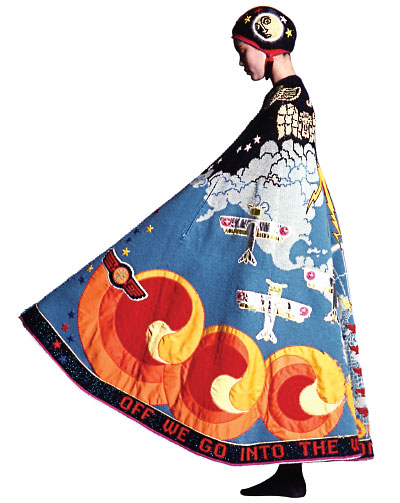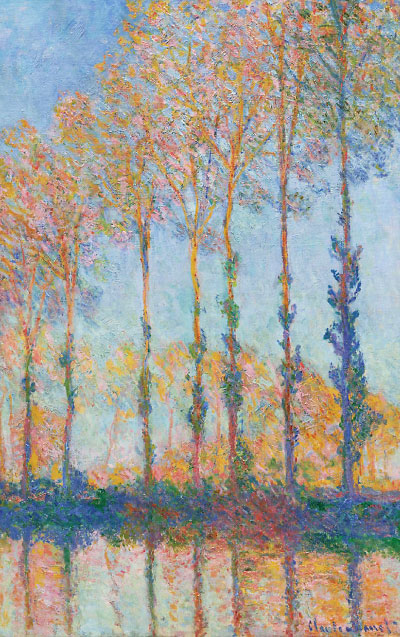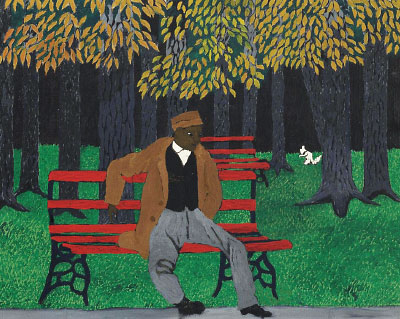Art Abounds in Philadelphia
Abstract
From Baroque to American folk art, the Philadelphia Museum of Art has exhibitions to suit every aesthetic.

“Off We Go into the Wild Blue Yonder” by Susanna Lewis, 1977.
Ask 100 artists what inspires them, and you will receive 100 different answers. For French Impressionist Claude Monet, it was nature, notably flowers. For Flemish Baroque artist Peter Paul Rubens, it was mythology and religion. For early 20th century American folk painter Horace Pippin, it was war and the African American experience. Attendees at APA’s Annual Meeting in April can draw inspiration of their own from the works of these artists and more with a trip to the Philadelphia Museum of Art. Located a short distance from the Pennsylvania Convention Center on a sprawling campus that also includes the Anne d’Harnoncourt Sculpture Garden, the Rodin Museum, and the Perelman Building, the Museum of Art boasts 200 galleries of art from around the world—and the steps made famous by Rocky Balboa.
Annual Meeting attendees will be in Philadelphia in time to catch “Horace Pippin: From War to Peace,” a collection of six paintings by the self-taught artist. A native of West Chester, Pa., Pippen was severely wounded in World War I, and the injury left his right arm partially paralyzed. After the war, he returned home to eke out a living by taking odd jobs, but the emotional scars of battle plagued him.
At age 40, Pippin turned to art both as solace and self-therapy. He taught himself pyrography, a method of drawing by burning images into wood panels, and from there he moved on to oil painting. Pippin would paint by holding the paintbrush in his right hand while guiding his right arm with his left hand. It took him three years to complete his first painting, “The Ending of the War, Starting Home,” which will be on display as part of the exhibition. Pippin went on to create other antiwar pictures, but much of his work focused on the African American experience.

“Poplars, End of Autumn” by Claude Monet, 1891.
Visitors can also catch a memorial exhibition of work by Marisa Merz, the only woman artist associated with Arte Povera, an Italian art movement from the late 1960s through the 1970s wherein the artists combined textiles and other industrial matter with organic matter such as soil or plant matter to make a statement about the interplay between the natural and the artificial. Merz’s work incorporates materials such as copper wire, wax, unfired clay, heavy metals, and industrial paints.
Merz began making art at age 40, and she chose not to date her artwork or present it in traditional exhibition settings for most of her life. She received her first solo museum exhibition when she was 90 years old. She died last summer at age 93.
The Philadelphia Museum of Art also houses several prominent permanent collections. Among them is the largest collection of works by Marcel Duchamp, who became famous for his “readymades,” works created with manufactured objects. The New European Galleries in the museum are home to Impressionist and Post-Impressionist paintings including Paul Cézanne’s “The Large Bathers” and Vincent van Gogh’s “Sunflowers,” as well as works by Édouard Manet, Claude Monet, Pierre-Auguste Renoir, Camille Pissarro, and Edgar Degas. “Baroque: The Art of Drama” highlights the grandeur of 17th century painting and sculpture and features the works of Rubens, Luca Giordano, and their contemporaries.
Fans of fashion and pop culture will enjoy the merger of art and clothing in “Off the Wall: American Art to Wear,” a celebration of wearable art created in the 1960s and 1970s and housed at the Perelman Building, a short walk from the main building. With titles derived from the era’s popular music such as “The Times They Are a-Changin’ ” (Bob Dylan) and “I Am Woman” (Helen Reddy), the exhibition’s nine sections feature coats, jackets, vests, shorts, and other items in a riot of color and materials.

“The Park Bench” by Horace Pippin, 1946.
The Rodin Museum, which is administered by the Philadelphia Museum of Art, is the only museum dedicated to the works of Auguste Rodin outside of France. It contains nearly 150 of the French sculptor’s works, including bronze casts of “Eternal Springtime,” “The Gates of Hell,” “The Burghers of Calais,” and “The Thinker.”
A sunny April day may call for a stroll through the Anne d’Harnoncourt Sculpture Garden, a one-acre sculpture garden that is home to large-scale contemporary works by artists like Claes Oldenburg, Toshiko Takaezu, and Ellsworth Kelly.
Tickets to the Philadelphia Museum of Art are good for two days and include entrance to the Main Building, the Perelman Building, the Rodin Museum, and the Anne d’Harnoncourt Sculpture Garden. ■
The main building is located at 2600 Benjamin Franklin Parkway. Click here for more information.



